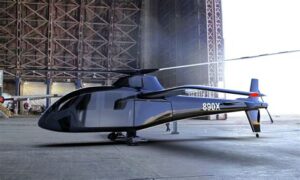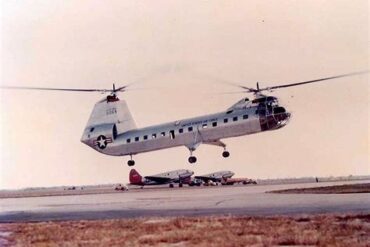The Piasecki PA-890 is a remarkable aircraft that stands out in the realm of aviation engineering and design. Developed during the mid-20th century, this innovative aircraft represents a significant leap in technology and operational capabilities. This article delves into the intricate details of the PA-890, exploring its design, performance, historical context, and its impact on aviation.
Historical Background of the Piasecki PA-890
The Piasecki PA-890, developed by Piasecki Aircraft Corporation, was conceptualized during a period of intense competition and innovation in the aerospace industry. Emerging in the late 1950s, the PA-890 was designed to fulfill the growing demand for advanced utility helicopters capable of performing a variety of missions, including transportation, search and rescue, and medical evacuation. The aircraft’s development was a response to the military’s need for versatile and efficient rotorcraft that could operate in diverse environments.
The PA-890 was built on the foundational principles of Piasecki’s earlier models, incorporating lessons learned from previous designs. The aircraft was named after its lead engineer, Piasecki, and aimed to push the boundaries of what was achievable in rotary-wing technology.
Design Features of the Piasecki PA-890
The design of the PA-890 is characterized by its unique features that enhance its operational efficiency and effectiveness. One of the most notable aspects is its twin-rotor system, which significantly improves stability and lift capacity. The aircraft features two main rotors, mounted in a counter-rotating configuration, which minimizes torque effects and allows for smoother flight characteristics. This innovative design provides superior maneuverability, making the PA-890 suitable for various missions.
Dimensions and Specifications
The Piasecki PA-890 boasts impressive dimensions, contributing to its functionality as a multi-role helicopter. Its length measures approximately 60 feet, with a rotor diameter of 50 feet, allowing for ample lift and cargo space. The maximum takeoff weight (MTOW) is approximately 12,000 pounds, providing the capability to carry substantial loads, including personnel and equipment.
Powerplant and Performance
At the heart of the PA-890’s performance is its powerful engine. The helicopter is equipped with two Pratt & Whitney PT6A turboprop engines, providing the necessary thrust to achieve impressive flight characteristics. With a maximum speed of around 150 knots and a range of approximately 600 nautical miles, the PA-890 is designed for both efficiency and versatility.
The rotorcraft’s advanced avionics system enhances its operational capabilities, allowing pilots to navigate through challenging conditions and execute complex missions with precision. The incorporation of state-of-the-art technology ensures that the PA-890 remains relevant in modern aviation, despite being developed decades ago.
Operational Capabilities
The Piasecki PA-890 was designed as a multi-mission helicopter, capable of performing a variety of roles effectively. This versatility is one of its key selling points, allowing it to adapt to different operational requirements.
Transport and Logistics
In its transport role, the PA-890 is capable of carrying up to 15 passengers or a significant amount of cargo, making it an ideal choice for military and civilian logistics. Its spacious cabin can accommodate various configurations, including medical evacuation setups, troop transport, or cargo missions.
Search and Rescue Operations
The design of the PA-890 also lends itself well to search and rescue (SAR) operations. The aircraft can be equipped with advanced searchlights, winches, and medical equipment, enabling it to perform life-saving missions in both urban and remote environments. Its agility and ability to hover in place make it an invaluable asset in emergency situations.
Historical Significance and Legacy
The historical significance of the Piasecki PA-890 cannot be understated. It represents a turning point in helicopter design, influencing future rotorcraft developments across the globe. While it did not achieve the same level of notoriety as some contemporaries, its engineering principles paved the way for subsequent models and designs in the aviation industry.
Influence on Future Designs
The innovative twin-rotor system employed in the PA-890 has been adopted and adapted in various military and civilian helicopters. This design approach has influenced aircraft like the CH-47 Chinook and the V-22 Osprey, showcasing the lasting impact of Piasecki’s engineering vision. The advancements made with the PA-890 in areas such as stability, control, and payload capacity have set new standards in helicopter performance.
Comparative Analysis: PA-890 vs. Other Helicopters
When comparing the Piasecki PA-890 to its contemporaries, several factors come into play, including performance, versatility, and operational history. Notable competitors include the Sikorsky S-58 and the Bell UH-1 Iroquois.
Performance Metrics
The PA-890 stands out with its twin-rotor design, which offers distinct advantages over the single-rotor designs of its competitors. The reduced vibration and enhanced maneuverability of the PA-890 give it an edge in certain operational contexts, particularly in urban environments where agility is crucial.
Versatility and Applications
While both the S-58 and UH-1 excel in military operations, the PA-890’s flexibility in civilian applications, such as firefighting and disaster relief, sets it apart. The ability to quickly reconfigure the cabin for different missions enhances its value to operators.
Technological Innovations
The Piasecki PA-890 also introduced several technological innovations that have had a profound impact on the field of aviation. One of the most notable is its advanced rotor technology, which incorporated innovative materials and designs to enhance performance and reduce maintenance needs.
Materials and Construction
The aircraft’s use of composite materials and advanced alloys helped reduce weight while maintaining structural integrity. This approach not only improved performance but also contributed to lower operating costs, making the PA-890 an attractive option for operators.
Avionics Advancements
The PA-890 was equipped with cutting-edge avionics systems for its time, including digital flight controls and enhanced navigation systems. These advancements have influenced modern helicopter design, emphasizing the importance of integrating technology into aviation to improve safety and operational efficiency.
Legacy and Preservation
Today, the legacy of the Piasecki PA-890 continues to inspire aviation enthusiasts and engineers alike. While production ceased several decades ago, efforts are underway to preserve the remaining aircraft and educate future generations about its significance in aviation history.
Museum Exhibits and Restoration Projects
Several museums and aviation organizations have taken steps to restore and display the PA-890, showcasing its design and capabilities. These restoration projects not only celebrate the aircraft’s engineering marvel but also serve as a reminder of the importance of innovation in the aerospace industry.
Continued Interest in Rotorcraft Design
The principles and designs pioneered by the PA-890 remain relevant today as the aviation industry continues to evolve. New technologies and materials are being integrated into helicopter design, drawing inspiration from historical models like the PA-890. This ongoing interest ensures that the aircraft’s legacy lives on in modern aviation.
Conclusion
The Piasecki PA-890 is more than just an aircraft; it is a testament to innovation and engineering excellence in aviation history. Its unique design features, operational capabilities, and lasting legacy continue to influence the aerospace industry. As we look to the future of aviation, the PA-890 serves as a reminder of the importance of pushing boundaries and striving for excellence in every flight. Through its advancements, the PA-890 not only paved the way for future helicopter designs but also left an indelible mark on the hearts and minds of aviation enthusiasts worldwide.

